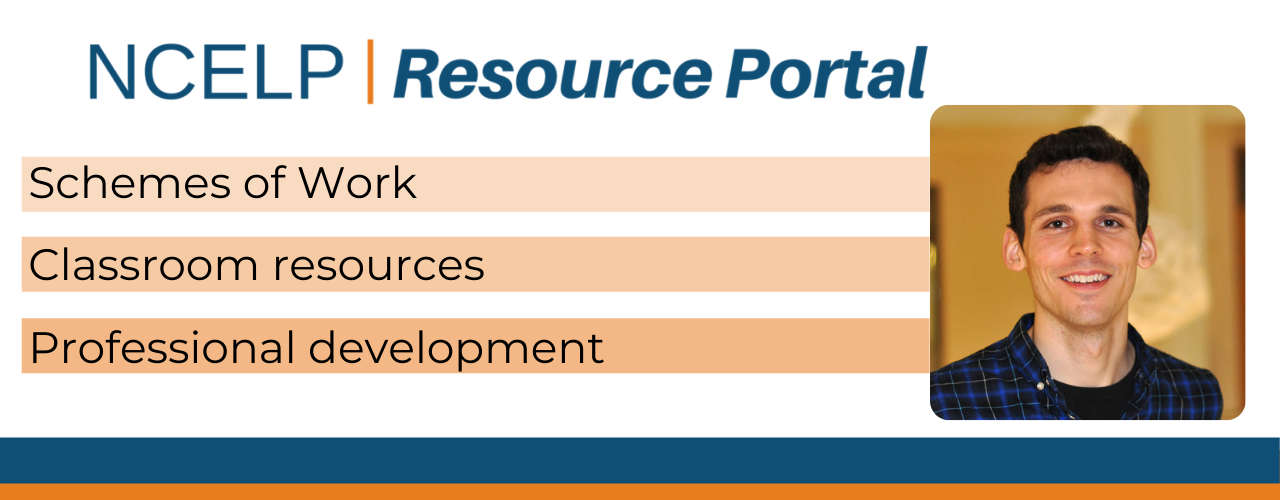Find out how an NCELP Scheme of Work is developed with Nick Avery, Spanish Resource Developer.
How has your ‘journey’ been creating resources for NCELP?
It has been quite a journey! When I started, we initially created example classroom resources to share at events with schools from the NCELP network. Although this was useful, we soon realised that we would need to design a full Scheme of Work (SOW) to give schools the best support possible in implementing the recommendations of the MFL Pedagogy Review. This would be a big undertaking, but we set out to do it!
Three years later, our French, German and Spanish SOWs will soon be fully resourced for Years 7-9, and many schools have been using our resources. As the project has evolved, resource creation has become a real team effort, with a number of people involved in creating every single lesson. It’s been great to work with some very creative and dedicated colleagues on this!
Where did you start in creating the SOW?
As we weren’t aware of any existing SOWs that took the language (rather than topics) as a starting point, we essentially started from scratch. We began by thinking about the core grammar features for KS3 in each language and in what order they might be effectively taught and revisited.
By doing this first, we were able to make a ‘grammar spine’ that could then tie in with relevant, highly frequent vocabulary. We also had to think about what this vocabulary and grammar would allow students to communicate about (the contexts) and which ‘sounds of the language’ would also need to be covered each week.

As the project has evolved, resource creation has become a real team effort
How do you create an NCELP lesson resource?
This is hard to put into a few words! A lesson often feels like a puzzle with many different pieces that have to fit together. For me this includes:
Even after a lot of planning, it is usually only in making the resource that you begin to see how successfully the lesson does these things! Quite a lot of time is spent checking the lesson and reading others’ feedback before the lessons are finalised.

A lesson often feels like a puzzle with many different pieces that have to fit together
Does the SOW include a cultural aspect?
Definitely! Language and culture are so closely connected that it is hard to separate them in practice. We can use the language to help students learn about the countries and societies where it is spoken. Some examples from our Y9 Spanish SOW resources include the Spanish conquest of Peru, a Mexican tradition, Cuban migration to the USA, the past and present of a Colombian city and Spanish cinema.
There is also culture within the sounds, words and grammar of the language itself. Rachel Hawkes collated some examples from different languages in this presentation. One example that we included in the Spanish SOW is the way that the pronunciation of [z], [ce] and [ci] varies in different parts of the Spanish-speaking world. This felt like a great opportunity to combine phonics practice with raising awareness of geographical variation in language use.

We can use the language to help students learn about the countries and societies where it is spoken
What are you most looking forward to in future work with NCELP?
We’ll soon be creating example speaking activities in line with the new GCSE Subject Content. It’ll be interesting to design some role plays where students are prompted to ask and answer questions imagining that they are in a particular scenario. We will hopefully also make some oral narration activities based on picture sequences. First, though, we’ll be finishing off the resources for our Year 9 SOW!




